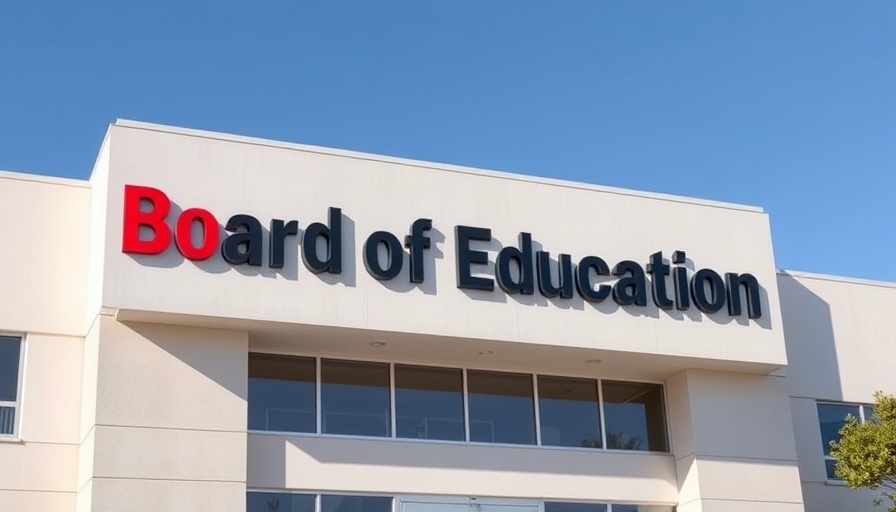
A Fragile Outcome: Balancing Restorative Justice and Budget Cuts
San Diego Unified School District has made a significant move by expanding its restorative justice policies aimed at addressing the long-existing inequities in school discipline. However, this initiative arrives at a pivotal moment when budget cuts threaten the very support systems essential for its success.
Historically, discipline disparities have disproportionately affected students from minority and marginalized backgrounds. In San Diego, Black students, for instance, have faced disciplinary actions at rates four times higher than those of their White peers. This alarming trend reflects a broader national issue where suspensions and expulsions serve as gateways to the juvenile justice system rather than pathways to education.
Restorative Justice: A Shift Towards Healing
The concept of restorative justice emerged as a paradigm shift in educational discipline, prioritizing healing and community over punitive measures. Implemented by San Diego Unified since 2020, these policies aim to foster dialogue and build healthy school communities, theoretically reducing the prevalence of harmful behaviors among students.
Research suggests that such approaches not only lead to fewer suspensions but can also positively impact students' emotional well-being and community bonding. Ebonee Weathers, the district's director of equity and belonging, emphasizes the importance of making school environments where students feel connected and accountable to one another. Such an environment is essential for genuine behavioral change.
The Challenge of Implementation
Despite the optimism surrounding restorative justice, the effectiveness of these policies heavily relies on consistent and thorough implementation. Unfortunately, San Diego Unified's journey thus far has been uneven. Past concerns about the mixed results of these policies have emerged, sparking debates about the perceived leniency in handling student misconduct.
When restorative justice practices are poorly executed, they can exacerbate classroom issues rather than resolve them. As the district moves forward, closing the gaps created by previous policy shortcomings is crucial. This adds urgency to the need for well-supported training and resources for educators and staff involved in this approach.
Funding Cuts: A Double-Edged Sword
As the San Diego Unified board embraces new restorative measures, it simultaneously faces the difficult decision of cutting funding for key roles that facilitate these programs. This dichotomy presents a critical concern: how can the district claim to enhance restorative practices while slashing resources dedicated to their implementation?
The elimination of funding for these indispensable positions may undermine the aspirations of the restorative discipline initiative. Without proper support and resources, the successful deployment of restorative practices may falter, creating a gap that could ultimately set back progress in curbing disciplinary inequities.
The Voice of the Community: Diverse Perspectives on Change
The community's apprehension about the new policy reflects a broader conversation around accountability and safety in schools. Some parents and community members worry that restorative practices could lead to disorderly classrooms without clear and firm consequences for inappropriate behaviors. Others view the changes as a necessary step toward creating inclusive, supportive learning environments.
Regardless of differing opinions, one thing remains clear: for the restorative justice policies to truly make a difference, it is essential to engage all stakeholders, including parents, educators, and students, in ongoing conversations about both expectations and outcomes.
Looking Ahead: Opportunities for Community Involvement
As San Diego Unified continues to navigate its path forward, there lies an opportunity for community involvement to play a significant role. Engaging parents, teachers, and local organizations can create a robust support network for the district's strategies. Encouraging shared investment in student success could foster collaboration, transparency, and ultimately, better outcomes for those disproportionately affected by the disciplinary system.
Community engagement not only amplifies voices but also helps to hold the district accountable for its commitments. By working together, San Diegans can contribute to an educational landscape that prioritizes justice and preventative measures against the school-to-prison pipeline.
The journey towards equity in discipline is undoubtedly fraught with challenges, but it also presents the potential for meaningful change. As stakeholders collaborate, the focus should consistently stay on what matters most—creating safe, respectful, and equitable educational environments for all students.
While it remains vital to highlight the successes, it's equally important to address the institution’s shortcomings and actively seek solutions as part of the collective mission to transform the educational system. A well-rounded approach will indeed pave the way for a brighter future for students in San Diego.
 Add Row
Add Row  Add
Add 




Write A Comment